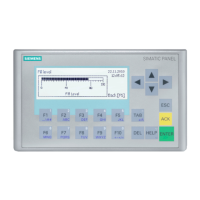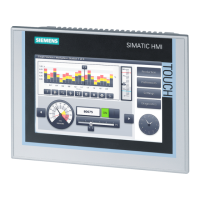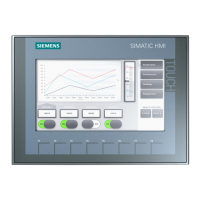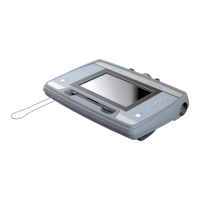
Do you have a question about the Siemens SIMATIC HMI KP300 Basic mono PN and is the answer not in the manual?
| Communication Ports | PROFINET |
|---|---|
| Power Supply | 24 V DC |
| Operating Temperature | 0 to 50 °C |
| Storage Temperature | -20 to 60 °C |
| Function Keys | Yes |
| Protection Rating | IP65 (front) |
| Relative Humidity | 10 to 90% (non-condensing) |
| Mounting Type | Panel mounting |
Explains the purpose and intended audience of the operating instructions.
Details the applicability of the manual to SIMATIC HMI Basic Panels.
Describes the graphical and text conventions used for better understanding.
Lists the registered trademarks of Siemens AG.
Introduces the SIMATIC HMI Basic Panels and their key features.
Illustrates and labels the physical components of the KP300 Basic mono PN.
Illustrates and labels the physical components of the KP400 Basic color PN.
Illustrates and labels the physical components of the KTP400 Basic mono PN.
Illustrates and labels the physical components of the KTP400 Basic color PN.
Illustrates and labels the physical components of the KTP600 Basic mono/color PN.
Illustrates and labels the physical components of the KTP600 Basic color DP.
Illustrates and labels the physical components of the KTP1000 Basic color PN.
Illustrates and labels the physical components of the KTP1000 Basic color DP.
Illustrates and labels the physical components of the TP1500 Basic color PN.
Lists all components included in the HMI device's product package.
Details optional accessories available for purchase for HMI devices.
Provides a step-by-step overview for commissioning the HMI device.
Covers critical safety precautions for operating and installing HMI devices.
Offers guidance on IT security measures for automation systems.
Contains important notes on HMI device usage, industrial applications, and residential use.
Outlines essential steps and checks before mounting and connecting the HMI device.
Details the physical installation process for the HMI device into its mounting cutout.
Explains how to connect power, programming devices, PCs, and PLCs to the HMI.
Guides through the procedure for powering on and performing initial tests.
Describes methods for securing cables to the HMI device for strain relief.
Explains how to interact with HMI devices using touch screens and function keys.
Covers the operation of the KP300 Basic, including system keys and menus.
Details operation of the KP400 Basic, including key assignments and data input methods.
Guides users on accessing and using the Control Panel for device settings.
Explains configuration options and settings specific to the KP300 Basic model.
Introduces the project lifecycle from creation to deployment on the HMI device.
Describes the different operational states: Offline, Online, and Transfer.
Lists the available data channels for transferring projects and system data.
Details manual and automatic methods for transferring projects to the HMI device.
Explains how to create backups and restore data from a PC.
Provides instructions for updating the operating system on Basic Panel DP devices.
Provides instructions for updating the operating system on Basic Panel PN devices.
Offers guidance on cleaning and maintaining the HMI device for optimal performance.
Provides information on the environmentally sound recycling of HMI devices.
Lists the certifications and approvals obtained by the HMI devices.
Details EMC compatibility, ESD guidelines, and other technical declarations.
Presents detailed physical dimensions for various HMI device models.
Lists detailed technical specifications for weight, display, input, memory, interfaces, and power.
Describes the pin assignments for power supply, PROFIBUS, and PROFINET interfaces.
Details the functional capabilities and limits when using WinCC software.
Provides contact information and resources for technical assistance and downloads.
Explains the meaning and function of system events for troubleshooting.












